ASGARD: Developing an Anti-Spoofing Weapon
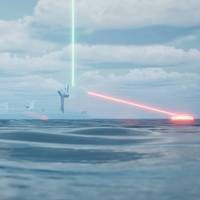
Saab and GMV are collaborating in ASGARD, an EU-funded project that aims to improve maritime security when using GNSS and OSNMA. The project addresses the growing threat of GNSS spoofing and other cyberattacks on navigation systems used in the maritime industry.The ASGARD project, run by Saab and GMV, is an ambitious European Union (EU) initiative that aims to develop advanced technologies to improve Global Navigation Satellite System (GNSS) and Open Service Navigation Message Authentication (OSNMA) security in maritime environments.
Yang Ming Orders Five New Box Ships
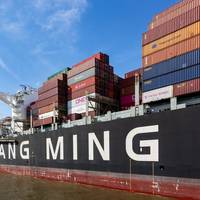
Taiwanese container shipping company Yang Ming Marine Transport Corp. announced it has ordered five liquefied natural gas (LNG) dual-fuel containerships from South Korean shipbuilder HD Hyundai Heavy Industries Co., Ltd. The 15,500 TEU newbuilds are scheduled to be delivered in 2026. Each will be equipped with high-pressure LNG dual fuel main engines and ballast water treatment systems. In addition, the vessels will feature an advanced integrated system for navigational information and operation monitoring…
Yang Ming Orders Five Dual-Fuel LNG Container Ships

Taiwan’s Yang Ming Marine Transport Corporation has ordered five 15,500 TEU LNG dual fuel container ships from HD Hyundai Heavy Industries.The new vessels are scheduled to be delivered in 2026. They will be equipped with a high-pressure LNG dual fuel main engine. In addition, they will feature a ballast water treatment system, an advanced integrated system for navigational information and operation monitoring and a broadband maritime satellite system.These technologies are integral for collecting navigational big data and enhancing the safety of the vessels, says Yang Ming.
Maritime Safety: ACR, Ocean Signal Develop New EPIRB with Integrated AIS
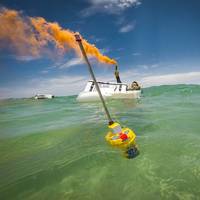
ACR Electronics and Ocean Signal announced the development of next generation EPIRBs.Introducing integrated AIS (Automatic Identification System) within their EPIRBs for the first time in conjunction with further new technology, ACR and Ocean Signal will launch the advanced beacons this year ahead of the enforcement of new updated IMO (International Maritime Organization) Maritime Safety Committee EPIRB regulations.AIS EPIRBs will offer both recreational and commercial users the extra reassurance that other nearby vessels will be notified in an emergency…
Wärtsilä Unveils 'Smart' Camera System for Ships
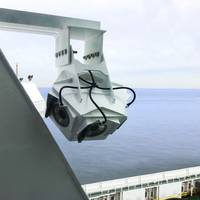
Wärtsilä Voyage has launched its Smart Panoramic Edge Camera System (S.P.E.C.S), designed to enhance marine safety by providing 360 degree situational awareness, streamed directly to the bridge in real-time.In addition to eliminating blind spots with digital panoramic cameras located around the vessel, S.P.E.C.S can also provide a birds-eye view of the ship and its surroundings, which the developer notes is a significant advantage when docking. The system’s cameras provide a calibrated range grid around the vessel to give precise measurement of distances.
Furuno's RD50 Remote Data Display Now Features 3-Axis Speed

The Furuno RD50 Remote Data Display has received an upgrade with software version 1.16, introducing the new 3-Axis Speed Indication when connected to a Satellite Compass. Critical for towboats, ferries and other commercial vessels, 3-Axis Speed Indication simultaneously displays important speed information for three different points of reference: Longitudinal Speed (ahead-astern), Transverse Speed port-starboard at the stern, and Transverse Speed port-starboard from a user-determined reference point.The RD50’s 8.4" Color LCD provides a wide variety of data from onboard sensors…
Thuraya Launches Push-to-talk Comms Solution with Cobham SATCOM
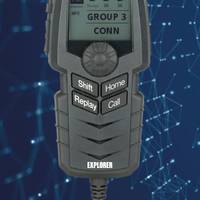
Thuraya Telecommunications Company, the mobile satellite services subsidiary of the UAE’s flagship satellite solutions provider, Al Yah Satellite Communications Company PJSC, announced it has launched its new IP-based radio communications solution, Thuraya Push-to-Talk (PTT).Thuraya PTT has been developed with Cobham SATCOM, a provider of satellite communications solutions to the maritime and land markets. The solution will enable users to extend the range of their voice communications…
UAF’s GINA Provides a Guiding Hand in Arctic Ocean Research
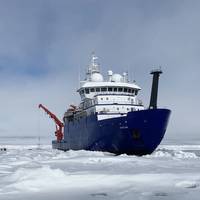
The research vessel Sikuliaq navigated among and around the chunks and slabs of Arctic sea ice above Alaska for several weeks on two voyages this fall, breaking through frozen slabs when it had to, just as its sturdy hull is designed to do. It's now on a third trip.The Sikuliaq, a 261-ft. ice-capable research vessel operated by UAF, pauses in the Arctic Ocean in June 2021 during its fifth year of operation. A few months later, it traveled farther north than ever before — almost 500 miles beyond Point Barrow.Satellite imagery produced at the Geographic Information Network of Alaska…
Sonardyne's Sensors for Ocean Infinity's Armada USV Fleet
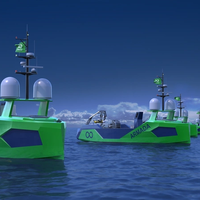
Ocean Infinity, a U.S. based marine survey firm developing the world's largest fleet of unmanned surface vessels - Armada - has ordered Sonardyne sensors for its robotic vessels.As reported previously, Ocean Infinity in February launched Armada, a marine technology and data company boasting the industry's largest fleet of unmanned surface vehicles (USV).Sonardyne said Wednesday it would provide the first wave of Ocean Infinity’s new Armada fleet with key sensor technologies for underwater platform navigation…
CYSEC SA Wins Maritime Cyber Security Contract
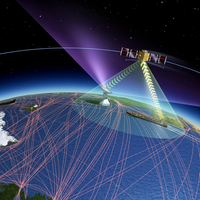
CYSEC SA, a cybersecurity company from Switzerland, has been awarded a contract by the European Space Agency (ESA) to develop a solution mitigating the cyber risks related to ship tracking using satellite communications.The digital revolution also impacts the shipping industry by integrating automated navigation, cargo-tracking systems and digital platforms which facilitate operations, trade and the exchange of data. To achieve this transformation, the mitigation of cyber security…
Ocean Signal Introduces Compact Float-Free EPIRB
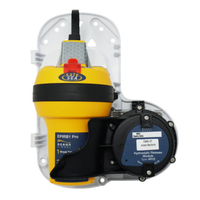
Ocean Signal has developed a compact Category 1 (auto-deploy) Emergency Position Indicating Rescue Beacon – the SafeSea EPIRB1 Pro.The new EPIRB1 Pro features a 30 percent reduction in size compared to other EPIRBs, a 10-year battery life and a retail price that makes it one of the most affordable EPIRBs on the market.Providing an essential link to emergency services for both recreational and commercial vessels, the Ocean Signal beacon complies with IMO regulations that require…
IMO Reviews GMDSS Requirements
International Maritime Organization (IMO)'s Sub-Committee on Navigation, Communications and Search and Rescue (NCSR) said that it will continue its ongoing work to review GMDSS requirements, to enable the use of modern communication systems in the Global Maritime Distress and Safety System (GMDSS), while removing requirements to carry obsolete systems.Search and rescue at sea depends on the integrated satellite and terrestrial radio-communication communications system - the GMDSS. The GMDSS is mandatory under the International convention for the Safety of Life at Sea (SOLAS).According to the Sub-Committee, the aim is to finalize the review in 2021, for submission to the Maritime Safety Committee (MSC), so that SOLAS amendments can be adopted for entry into force in 2024.
IMO Focus on SatCom
Terrestrial and satellite radio-communications are essential for routine communications and navigation and for ensuring the effective operation of the Global Maritime Distress and Safety System (GMDSS), to protect lives at sea.International Maritime Organization (IMO) is at the International Telecommunication Union (ITU) World Radio-communication Conference (WRC-19), in Sharm el-Sheikh, Egypt, (28 October - 22 November) with the message that the integrity of maritime radio-communication services needs to be protected.The use of radio spectrum allocated to existing (and future) maritime radio-communication services must be safeguarded.An important item on the WRC-19 agenda is to support the introduction of the Iridium satellite system in the GMDSS…
Autonomous Shipping – Cyber Hazards Ahead
![A look at the typical areas most frequently seen as the scene of common accidents on board workboats. (source: European Maritime Safety Agency [EMSA])](https://images.marinelink.com/images/maritime/w200h200c/a-look-at-the-typical-105797.jpg)
If autonomous vessels are the future of maritime shipping, then cyber threats may be its Achilles heel. Congested shipping, restricted visibility, limited maneuverability, and intensive docking activities all contribute to port hazards – 42 percent of EU reported marine accidents (injury/death/damage to ships) took place in port areas and 44 percent of workboat fatalities occurred on Tugs. Autonomous shipping should provide numerous benefits including increased safety by relieving crewmembers of unsafe and repetitious tasks.
Smart Navigation System
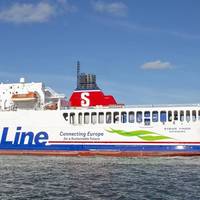
The research project Prepare Ships, led by RISE Research Institutes of Sweden, will develop a navigation system that foresees the positions of other vessels through machine learning. This reduces the risk of collisions and enables more efficient navigation. The project has recently been granted funding through the “European GNSS Agency”, GSA.A consortium of Swedish, Norwegian and German partners has now been given the go-ahead for their research and innovation project that will increase safety and efficiency in shipping.
CSSC CMC Wins MED Certificates from DNV GL
The international accredited registrar and classification society DNV GL announced the award of three Marine Equipment Directive (MED) certificates to the China State Shipbuilding Corporation Marine Technology Co., Ltd. (CSSC CMC).The MED module B certificates for Echo Sounder, Doppler Speed Log, and Global Navigation Satellite System (GNSS) were presented during the Nor-Shipping trade fair in Oslo, it said.“These three latest MED certificates represent the continuation of a long and productive cooperation between DNV GL and CSSC,” said Norbert Kray, DNV GL’s Regional Manager for Greater China. “For these latest certificates we were able to mobilize our global team and leverage the latest technologies to deliver an extremely efficient approval process.”In 2015…
USCG: EPIRBs and False Alerts

After responding to over 700 false alerts in 2018, the Coast Guard is urging anyone with an emergency position indicating radio beacon to properly register their device.An EPIRB is a device that transmits a distress signal to a satellite system called Cospas-Sarsat. The satellites relay the signal to a network of ground units and ultimately to the Coast Guard and other emergency responders.Owners of commercial fishing vessels, uninspected passenger vessels that carry six or more people, and uninspected commercial vessels are legally required to carry an EPIRB.
USCG Navigation Center: Steering a steady course for safe, secure, efficient waterways
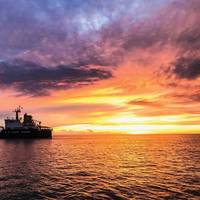
The U.S. Coast Guard’s Navigation Center (NAVCEN) is involved in a number of activities that have an impact on all Americans, even if they don’t realize it.From motorists checking directions with their Global Positioning System (GPS) to boaters to ships coming and going to U.S. ports, the NAVCEN plays an unseen but vital role.With a staff of19 officers, 17 enlisted personnel and 19 civilians, NAVCEN falls under the Director of Marine Transportation Systems (CG-5PW) at USCG Headquarters…
Inmarsat Faces US, Chinese Competition in Maritime Safety
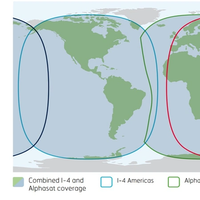
Britain's Inmarsat will lose its monopoly in maritime safety communications after the International Maritime Organization gave Iridium and China's BeiDou Navigation Satellite System the green light to develop competing systems.Inmarsat's shares fell as much as 14 percent after U.S.-based Iridium said late Monday its network had been recognized as a provider of Global Maritime Distress & Safety System (GMDSS).The stock was trading down 9 percent at 1345 GMT, while Iridium was up 4.7 percent in New York.Inmarsat announced the approval of its own new safety service and congratulated Iridium and B
EU-backed Autonomous Shipping Project Moves Forward
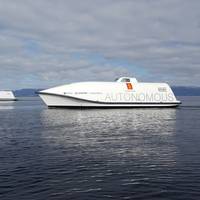
Hull to Hull (H2H), an EU-funded research project established to develop technical solutions for safer navigation in close proximity of other stationary or moving vessels and objects, is in its Concept Definition phase and will move on to the Technology Adaption and Integrations Work Package (WP03) this summer.H2H was established in November 2017 to develop solutions using the European Global Navigation Satellite System (EGNSS), EGNOS and Galileo, that can enhance safety in busy waters and during close maneuvering…
Cyber Threats Prompt Return of Radio for Ship Navigation
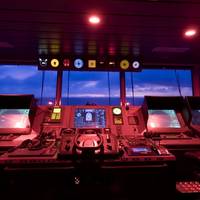
The risk of cyber attacks targeting ships' satellite navigation is pushing nations to delve back through history and develop back-up systems with roots in World War Two radio technology. Ships use GPS (Global Positioning System) and other similar devices that rely on sending and receiving satellite signals, which many experts say are vulnerable to jamming by hackers. About 90 percent of world trade is transported by sea and the stakes are high in increasingly crowded shipping lanes.
Sea Tel 9711 Triband Maritime Antenna System Launched
Satellite 2018 marks the launch of Cobham SATCOM’s Sea Tel 9711 Triband maritime antenna system, which leverages unique technology and capabilities from global communications company Viasat Inc. The Sea Tel 9711 Triband is the world’s first and only 2.4m maritime stabilized antenna capable of delivering full 2.4m gain performance across any C-, Ku-, or Ka-band network to maximize high-speed, high-quality broadband connectivity for high-demand maritime segments, such as Cruise, Energy and Government. The triband antenna system leverages radio frequency (RF) technology provided by Viasat to enable compatibility across any Ka-band satellite network operating in any orbit.
The Day of the Unmanned Ship is Dawning
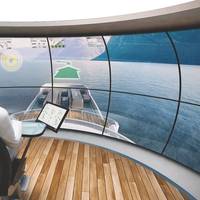
While debates rage in regards to safety, insurance and cyber security, the tech powering autonomous maritime operations continues to power ahead.Advances in sensor technology, data analytics and bandwidth-to-shore are fundamentally changing the way shipping works. And as operations are digitalized, they become more automated, Dr. Pierre C. Sames, Director of Group Technology & Research at class society DNV GL, has stated.Governments around the world are looking into unmanned shipping…






